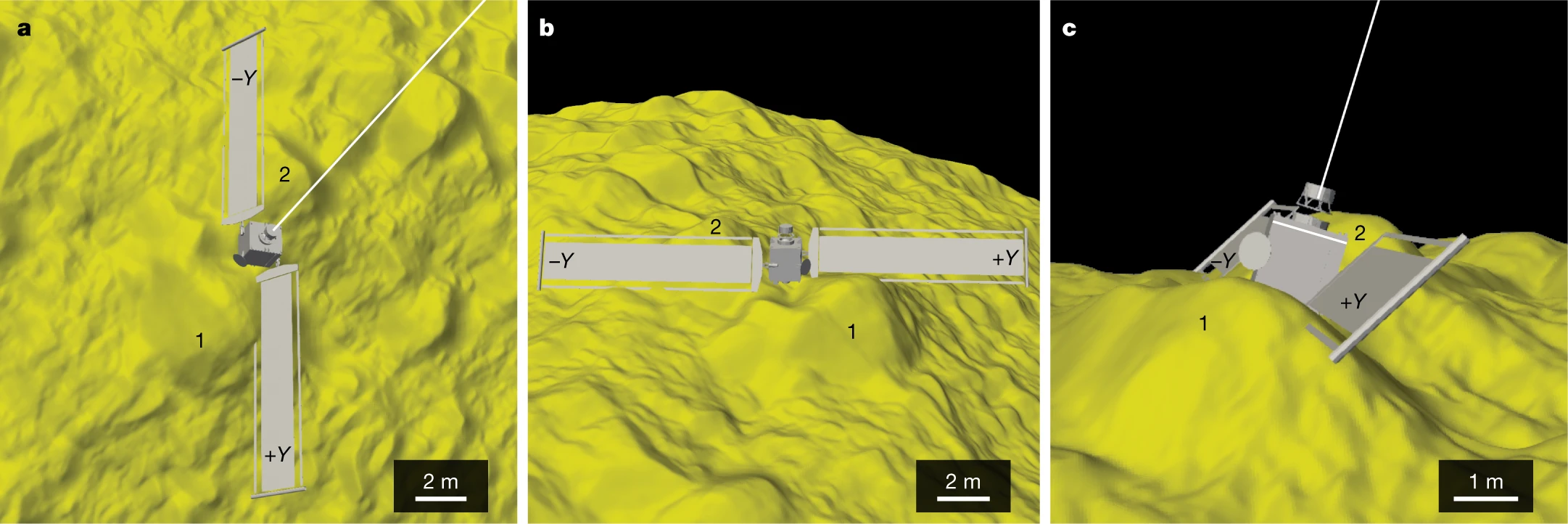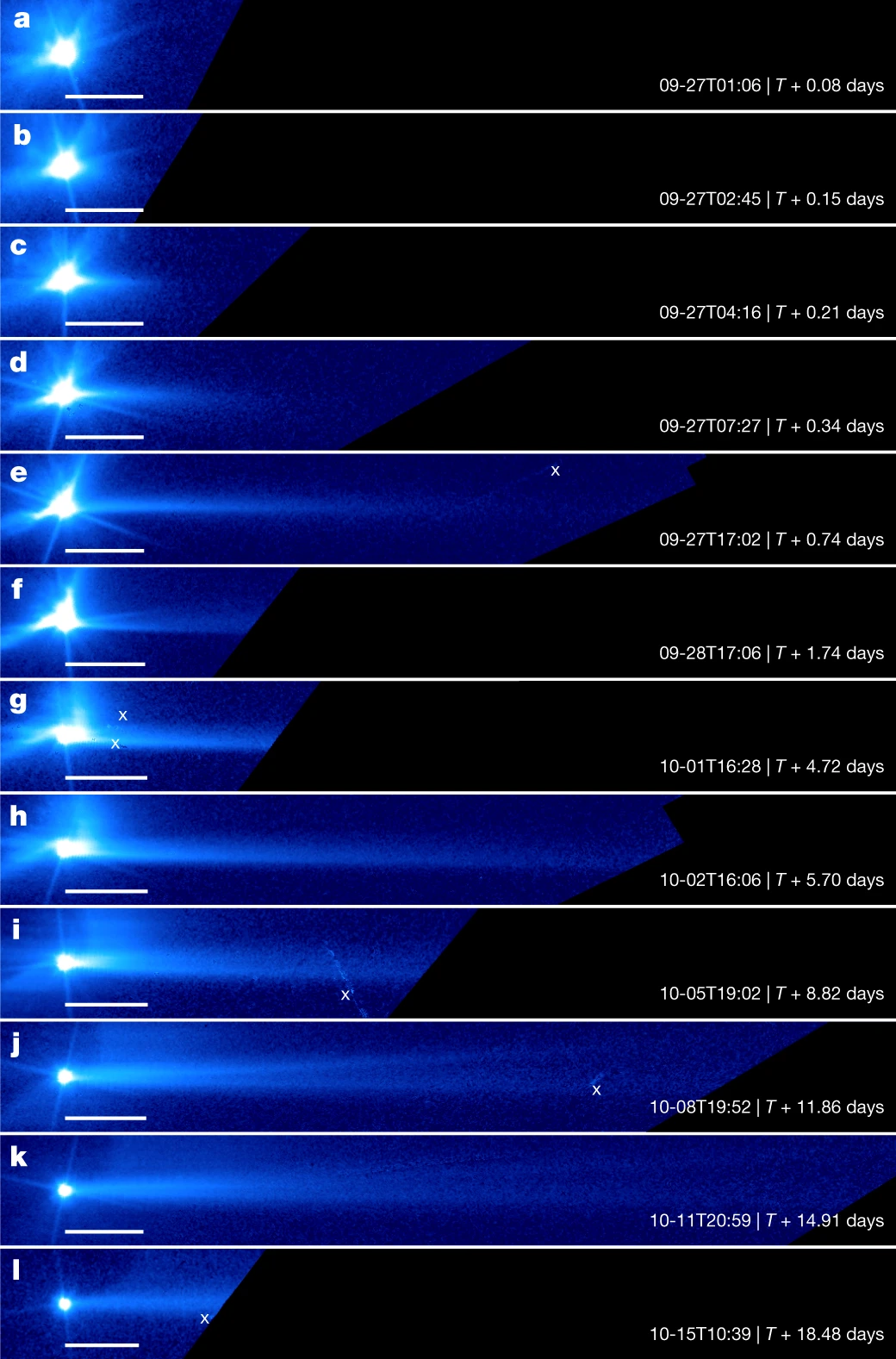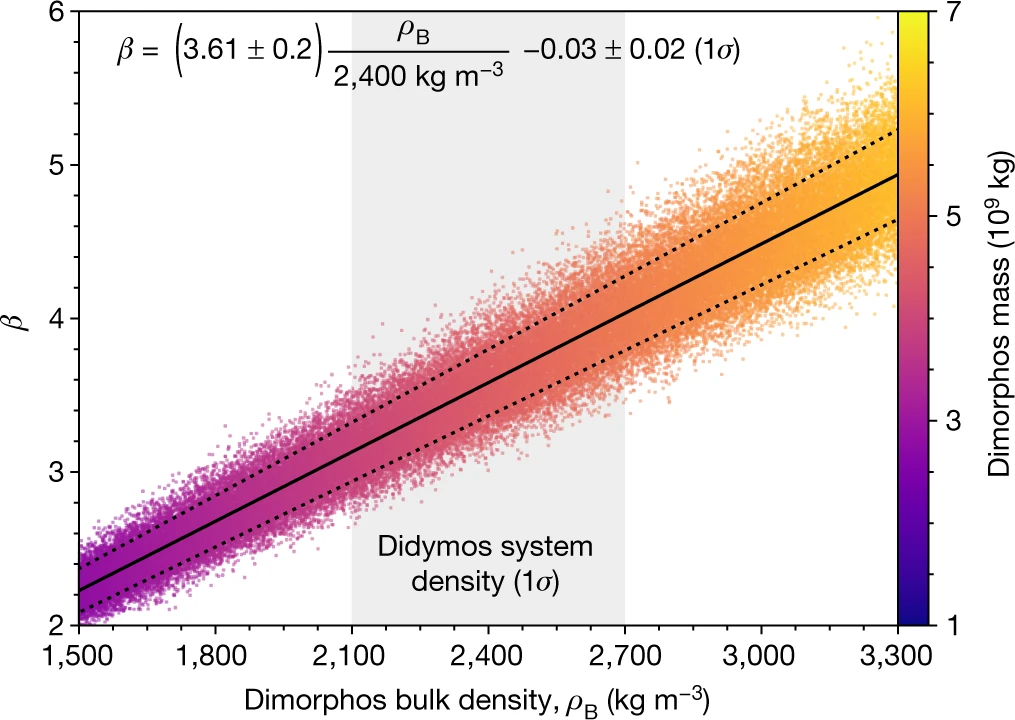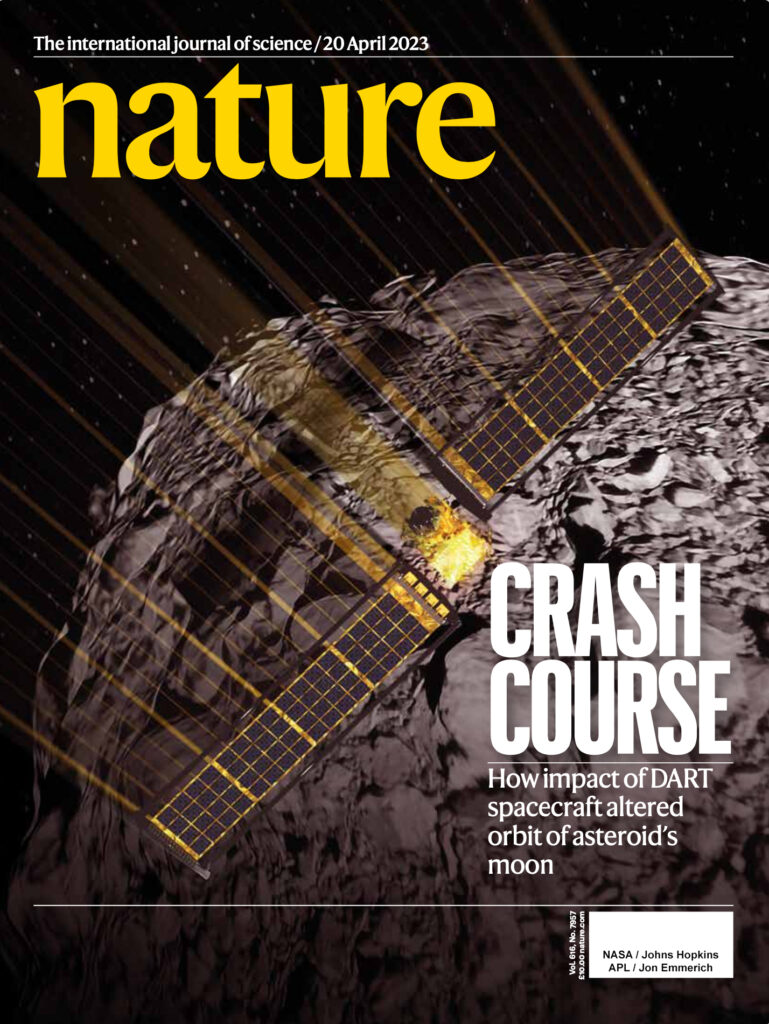CRASH COURSE, Volume 616 Issue 7957, 20 April 2023
The NASA DART first results have just did the cover of the journal Nature. Indeed, NEO-MAPPERS were among the scientists doing the cover of the international scientific journal Nature about the NASA’s Double Asteroid Redirection Test (a.k.a. DART) space mission’s scientific results. Three of the five open-access papers published in the journal Nature presenting the first results of the NASA DART mission acknowledge funding support from the Horizon 2020 European Union NEO-MAPP project. These papers made the cover of the journal on its 20 April 2023 issue.
Extract: “Although currently there is no known threat to Earth from asteroids, strategies to protect the planet from a collision are being explored. On 26 September 2022, NASA and the Johns Hopkins Applied Physics Laboratory successfully tested one such approach: the Double Asteroid Redirection Test (DART) spacecraft was deliberately crashed into Dimorphos, a moon orbiting the small asteroid Didymos, resulting in a change in the moon’s orbit. In this week’s issue, five papers explore the test and the effects of the collision. One paper reconstructs the impact; a second looks at the change to Dimorphos’s orbit caused by the impact. A third paper reports observations from the Hubble Space Telescope of the material ejected during the collision. A fourth paper uses modelling to characterize the transfer of momentum that resulted from the impact. And the final paper reports on citizen science observations before, during and after the collision.”
Here are the articles our team contributes to:
Daly et al. 2023. Successful kinetic impact into an asteroid for planetary defence. Nature 616, pages 443–447.

Fig. 3: Relationship between the spacecraft and topography at the DART impact site.
a–c, The position of the spacecraft immediately before the impact of the spacecraft bus from different perspectives to visualize the three-dimensional interactions between the spacecraft and surface. a, Dimorphos north is towards the top of the panel. b, Dimorphos north is to the right. c, Dimorphos north is roughly into the page. In all panels, the −Y solar array points to Dimorphos north. Length scales vary in these perspective views; the scale bars shown are approximate. Boulders 1 and 2 correspond to boulders 1 and 2 in Fig. 2. The caption to Fig. 2 gives the spacecraft dimensions.
Li et al. 2023. Ejecta from the DART-produced active asteroid Dimorphos. Nature 616, pages 452-456.

Fig. 4: Tail formation from the Dimorphos ejecta cloud.
a–l, All frames are rotated such that the expected direction of the tail based on our dust dynamic model (Methods) is in the horizontal direction extending towards the right. All frames are displayed with the same logarithmic brightness scale. The regions outside the field of view are marked by a dark blue colour. The symbol ‘x’ marks imaging artifacts. The scale bars are aligned with the asteroid at one end and extend 200 km towards the tail direction. a–c, Note that the first three frames have pointing-induced drift in the plane of the sky of 5–7 pixels approximately along the direction of the vertical diffraction spikes. The drift in all other frames is smaller than two pixels. The first frame (a) in this sequence acquired at T + 0.08 days (T + 1.9 h) shows no signs of a tail. A tail was visible starting from the second frame (b) acquired at T + 0.15 days (T + 3.5 h). The tail continued to grow in a direction that is, in general, consistent with an impulsive emission of dust from Dimorphos at the time of impact. i–k, The secondary tail is visible between T + 8.82 days and T + 14.91 days, pointing at about 4º north of the original tail.
Cheng et al. 2023. Momentum transfer from the DART mission kinetic impact on asteroid Dimorphos. Nature 616, pages 457-460.

Fig. 3: β as a function of Dimorphos’s bulk density ρB, from the dynamical Monte Carlo analysis.
Individual samples are plotted as points, whereas the linear fit for the mean β is plotted as the solid line and the dotted lines show the 1σ confidence interval. The colour bar indicates the mass of Dimorphos corresponding to each Monte Carlo sample, which is determined by bulk density and the volume. The density range shown corresponds to the 3σ range of the Didymos system density, whereas the shaded region highlights the 1σ range1. If the density of Dimorphos were 2,400 kg m−3, the densities of Didymos and Dimorphos would be the same as the system density, and β = 3.61+0.19−0.25

